Finance Minister Enoch Godongwana has bemoaned that rising government debt-service costs are negatively impacting service delivery.
To address this problem, the government is in the process of drawing down R150-billion from the Reserve Bank in an attempt to use the funds to reduce its debts.
Godongwana said this while delivering the 2024–2025 Budget Speech on Wednesday in the National Assembly sitting at Cape Town City Hall.
He said this as government debt-service costs have shot up to R382.2-billion.
“High and rising government debt hampers service delivery and investment by draining ever larger amounts of taxpayer resources for debt service,” Godongwana said.
“Debt-service costs now consume one of every five rands of government revenue and absorb a larger share of the budget than basic education, social protection, or health.”
He raised concern that high debt service costs were also hindering economic recovery and had a ripple effect of increasing borrowing costs across the economy.
The minister emphasised that stabilising debt was the government’s central policy objective.
Rising public debt
“Beyond the crowding-out effect of debt service costs on service delivery, high and rising public debt hinders economic recovery.
“Investors who lend to South Africa demand a premium to compensate them for the risks of investing in the country due to its high debt. This, in turn, raises borrowing costs across
the economy.
“In this context, fiscal consolidation will reduce the risk premium and bolster confidence, providing an incentive for investment and job creation.”
Godongwana stated that the government has decided to further mitigate fiscal risks by reducing borrowing over the medium term using a portion of valuation gains in the Gold and Foreign Exchange Contingency Reserve Account (GFECRA).
“As a result, debt-service costs will decline by R30.2-billion over the 2024 MTEF [medium-term expenditure framework] period compared with the 2023 MTBPS [medium-term budget policy statement] estimate,” he said.
GFECRA is an account held at the Reserve Bank that captures losses and profits on foreign currency reserve transactions, protecting the Reserve Bank from currency volatility.
When the rand exchange rate against the US dollar and other reserve currencies strengthens, the GFECRA balance declines.
However, when the rand depreciates, the balance improves.
Since 2003, the value of the account has grown to over R500-billion due to significant rand depreciation.
Settlement agreement
He said: “A proposed settlement agreement to be formalised between the National Treasury and the Reserve Bank will settle a portion of the valuation gains after ensuring that the necessary buffer and contingency reserve are fully funded.
“Consequently, between 2024/25 and 2026/27, the government will draw down R150-billion of the GFECRA balance.
“This will be formalised through legislation. The government will use these funds to reduce borrowing and, consequently, the growth in debt-service costs.
The National Treasury’s director-general, Duncan Pieterse, said R100-billion will be used in the 2024–2025 financial year, R25-billion in the following year, and the remaining R25-billion in the next year.
Pieterse said tapping into the GFECRA would result in debt-service costs declining by R30.2-billion over the 2024 MTEF period compared with the 2023 MTBPS estimate.
Godongwana highlighted that the government’s austerity measures implemented since the 2021 Budget were working, with the budget deficit — the amount the government has to borrow to cover the gap between spending and revenue — having declined from R550.6-billion in 2020/21 to R331.4-billion in 2023/24.
He emphasised that the deficit will continue to narrow over the 2024 medium-term expenditure framework period.




